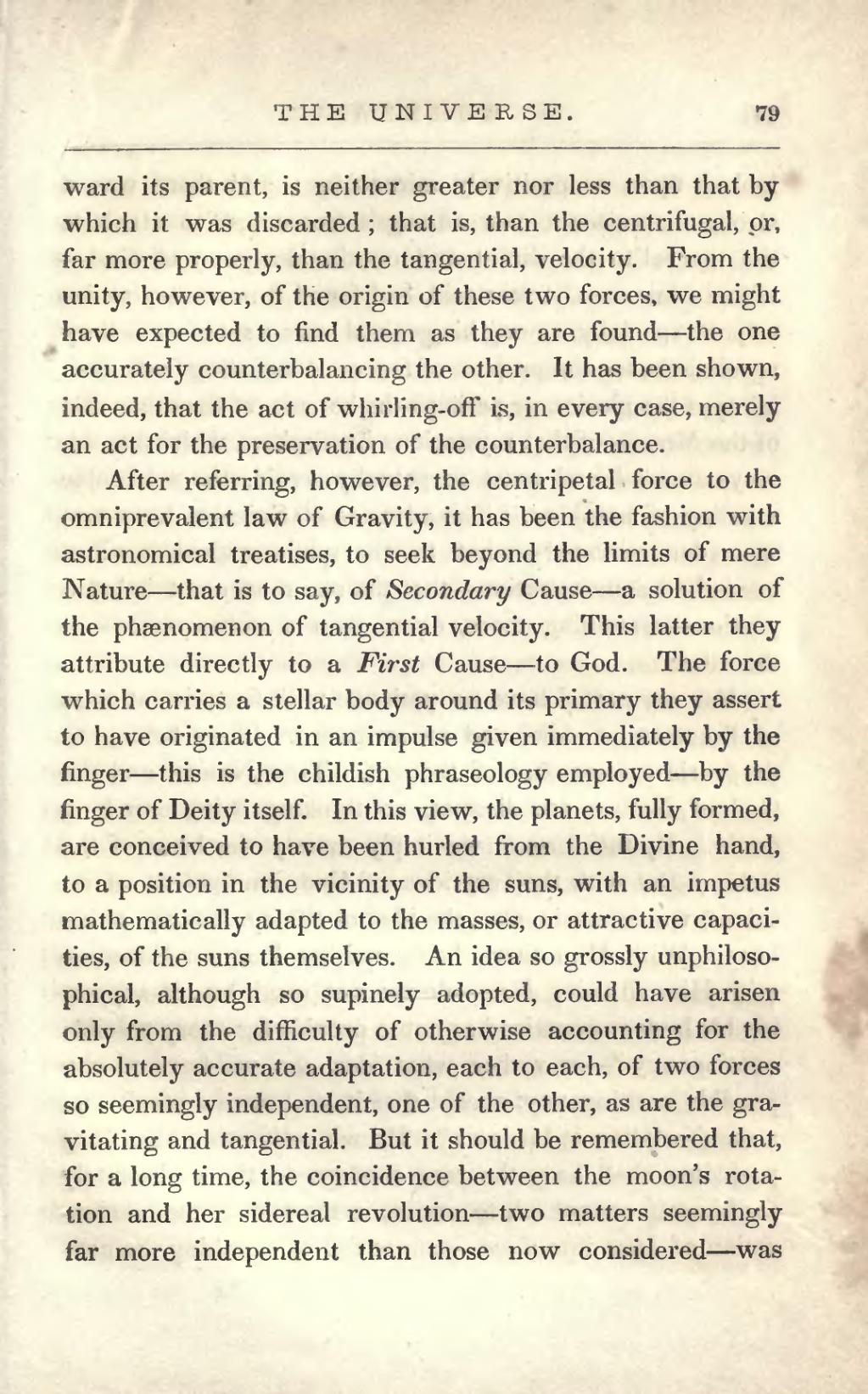ward its parent, is neither greater nor less than that by which it was discarded; that is, than the centrifugal, or, far more properly, than the tangential, velocity. From the unity, however, of the origin of these two forces, we might have expected to find them as they are found—the one accurately counterbalancing the other. It has been shown, indeed, that the act of whirling-off is, in every case, merely an act for the preservation of the counterbalance.
After referring, however, the centripetal force to the omniprevalent law of Gravity, it has been the fashion with astronomical treatises, to seek beyond the limits of mere Nature—that is to say, of Secondary Cause—a solution of the phænomenon of tangential velocity. This latter they attribute directly to a First Cause—to God. The force which carries a stellar body around its primary they assert to have originated in an impulse given immediately by the finger—this is the childish phraseology employed—by the finger of Deity itself. In this view, the planets, fully formed, are conceived to have been hurled from the Divine hand, to a position in the vicinity of the suns, with an impetus mathematically adapted to the masses, or attractive capacities, of the suns themselves. An idea so grossly unphilosophical, although so supinely adopted, could have arisen only from the difficulty of otherwise accounting for the absolutely accurate adaptation, each to each, of two forces so seemingly independent, one of the other, as are the gravitating and tangential. But it should be remembered that, for a long time, the coincidence between the moon's rotation and her sidereal revolution—two matters seemingly far more independent than those now considered—was

